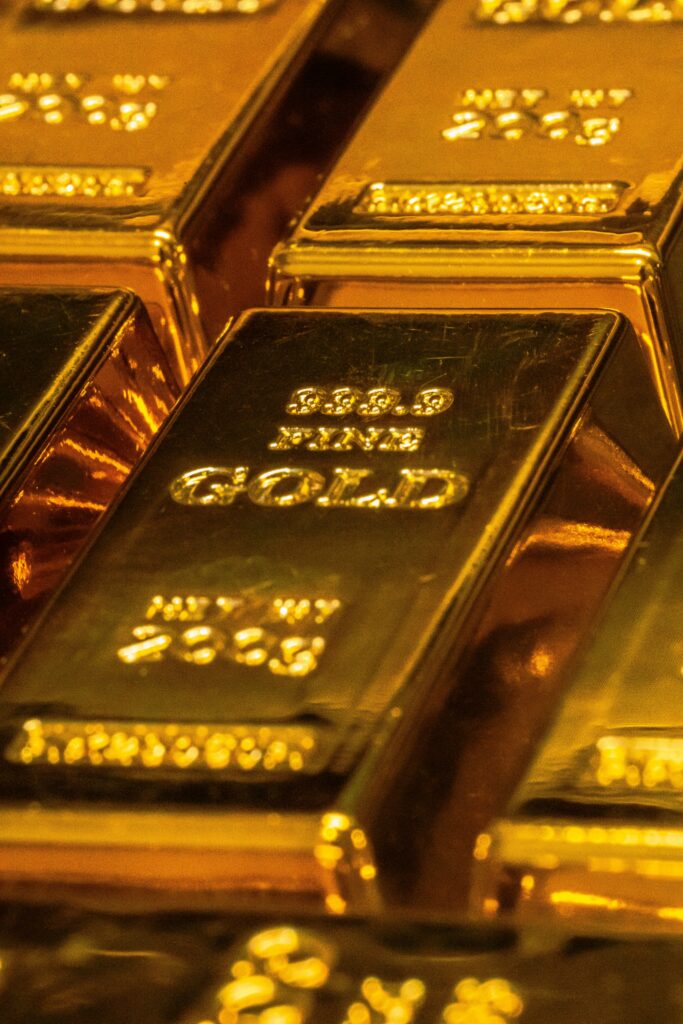Is gold finished as an inflation hedge?
Have we seen the end of gold as an inflation hedge? Will cryptocurrencies like Bitcoin replace this precious metal as an inflation hedge? Investors need to diversify their income streams and investment portfolios if they want to create a sustainable portfolio that can withstand market and currency shocks. During economic downturns, the historical diversifier has always been gold and precious metals.
Time and again, research has shown that gold holds its value exceptionally well during recessions. This is particularly true of the 2007-2009 financial crisis, when the cumulative performance of gold was 19% while the US stock market fell by 35%.
If your business is hit hard during a recession or market crash, gold can save you. But lately, the meteoric rise of the cryptocurrency Bitcoin has sparked interest in it as tomorrow’s inflation hedge and the possible successor to gold.
Our readers are now asking more than ever about the future of gold and whether Bitcoin could eventually replace it. That’s why I’ve decided to finally share my thoughts on why I think Bitcoin is here to stay but won’t be able to replace gold as the world’s reserve asset – at least not anytime soon.
Gold and Bitcoin: competitors or complements?
Bitcoin and other cryptocurrencies have recently caught the attention of institutional investors looking for the next generation of disaster hedge. Institutions and retail investors are now flocking to the digital asset class in unprecedented numbers – between Q3 and Q4 2020, the average institutional investment in the world’s largest crypto fund rose from $2.9 million to $6.8 million. In December alone, the price of bitcoin (BTC) rose by 47%.
Although JPMorgan Chase recently opined that “Bitcoin’s competition with gold has already begun”, there is little evidence to suggest that the success of one asset (BTC) means the liquidation of another (gold).
Demographic trends confirm that the tide is turning, with many younger investors preferring digital assets to physical metals. For example, only 7.5 percent of millennials aged 25-34 own gold and silver, while among wealthy millennials, 25 percent own cryptocurrency (and 31 percent are interested in acquiring it).
While it’s true that some retail investors are warming up to cryptocurrencies, institutional investors are not turning their backs on gold. For example, in the second half of 2020, Warren Buffett’s investment firm took a $565 million position in Barrick Gold. In the previous quarter Ray Dalio’s Bridgewater & Associates bought a $400 million stake.
The case for a double hedge
It is not entirely true that gold and cryptocurrencies serve the same purpose. While they are both store of value that can provide a safety net against inflation risk, their use cases are different. On the one hand, gold metals can be used in the manufacture of jewelry and electronics. On the other hand, bitcoin can facilitate instant cross-border payments and transfers without restriction from central authorities.
Therefore, when we zoom out and view the two assets from a microeconomic lens, it is clear that the two assets are functionally separate. However, given that neither is closely linked to the value of the US dollar, it is likely that both will continue to serve as important hedging tools as company-owned assets.
On the retail side, it is clear that young people favor crypto over gold. Nevertheless, there are many advantages that gold at this point poses over cryptocurrencies as a preserver of value and medium of exchange. These benefits make it hard to believe that gold will ever lose its luster for individual pension investors, including:
– Long-term price stability.
– Secure storage in vaults.
– Custodian monitoring of individual pension accounts in gold or silver.
– Real industrial tool.
– Proven longevity over millennia.
Meanwhile, bitcoin and altcoins are just now coming of age after a tumultuous 12-year maturation period. Bitcoin is more than “millennial gold.” Rather, it is a resilient, peer-to-peer payment network and store of value that deserves recognition alongside, rather than in opposition to, gold and silver.
Gold Versus Crypto: Consider Betting on Both
In short, I am positive on both gold and bitcoin in the coming year and so far there are no signals in the market indicating that either asset is going away anytime soon. Both the yellow metal and BTC have similar speculative functions but have very different individual characteristics and use cases, making them complementary investments rather than competitors.
Although more institutional money is likely to flow into BTC in the coming year, this does not pose an existential threat to gold. Not in the near future, at least. It is more likely that we will see gold and BTC become tandem hedges with prices becoming closely correlated. In other words, it seems we are staring down a future with two major inflation hedges rather than one.
If you’re an investor, perhaps the worst thing you can do is just sit on cash. To protect your business in the event of large-scale inflation, consider diversifying with assets that are not correlated with the US dollar, such as bitcoin and gold.
About the Vikingen
With Vikingen’s signals, you have a good chance of finding the winners and selling in time. There are many securities. With Vikingen’s autopilots or tables, you can sort out the most interesting ETFs, stocks, options, warrants, funds, and so on. Vikingen is one of Sweden’s oldest equity research programs.
Click here to see what Vikingen offers: Detailed comparison – Stock market program for those who want to get even richer (vikingen.se)













